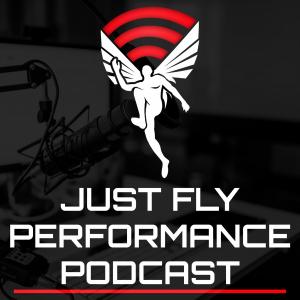Just Fly Performance Podcast

305: Tim Anderson on Rolling Techniques to Move Better, Improve Gait, and “Connect the X” of the Body
Today’s episode features Tim Anderson. Tim is the co-owner of the Original Strength Institute, and has been a personal trainer for over 20 years. He has written and co-written many books on human performance including The Becoming Bulletproof Project, Habitual Strength, Pressing RESET, and Original Strength Performance. When it comes down to it, his message is simple yet powerful: We were created to feel good and be strong throughout life. It is because of Tim that I’ve developed a fascination with crawling, and largely, a fascination with bodyweight training in general. So often, our thought on bodyweight training is one that revolves around ways to produce copious amounts of muscle tension, such as in gymnastics, which is great, and do so in volumes that can produce slabs of muscle. At the same time, bodyweight training is much more than simply looking for alternative ways to seek hypertrophy. Training with one’s bodyweight allows for a variety of reciprocal movement actions, where energy is stored and released, transmitting itself through the hands, spine, pelvis and feet. Training with one’s bodyweight also allows us to hone on rudimentary and reflexive movement skills, such as crawling. Tim appeared on episode #154 of the podcast, talking about the power of crawling and reflexive movement. On the tail end of that show, Tim discussed rolling for a few minutes, but I wanted to get him back to dig more thoroughly into that topic. On today’s show, Tim goes into the benefits of rolling, and how he progresses and instructs it for his clients. He speaks about rolling on the level of the vestibular system, joint rotation (particularly internal rotation), the gait cycle, sensation and awareness, and more. At the end of the show, we talk about modulating speeds and rhythms in ground-work, and finally, Tim gets into how his own personal workouts and training have progressed over time, and how rolling plays an important part of his own daily strength routine. Today’s episode is brought to you by SimpliFaster and Lost Empire Herbs. For 15% off your Lost Empire Herbs order, head to lostempireherbs.com/justfly. To try Pine Pollen for FREE (just pay for shipping), head to: justflypinepollen.com View more podcast episodes at the podcast homepage. Timestamps and Main Points: 3:28 – The purpose of rolling for human performance, and how Tim progresses it for clients 7:09 – The possibility of rolling to improve balance, coordination and dexterity through stimulation of the vestibular system 13:46 – Tim’s description of segmental rolling and how to progress it over time 23:30 – How much rolling Tim prescribes for various clients and individuals 26:53 – The specific elements in the process of rolling that helps to “connect the X” of the torso 32:21 – Ideas on using rolling or similar connective movements between more intensive main training sets 39:17 – How Tim looks at rolling and similar movements in light of their capacity to help improve internal rotation in individuals 46:44 – Addressing various speeds or rhythms to training movements 50:27 – What Tim’s early workouts looked like, and what his training has transitioned to now that he has gotten into his Original Strength workouts 58:29 – Ideas on super-slow crawling and the benefits of controlled bodyweight movement 1:04:02 – What the head and eye position should be like in the course of rolling “Our skin is our largest tactile organ, and when we roll, we are stimulating the skin a lot” “If you could imagine that your body is a sponge, and everything out there is information; so when you are rolling on the ground, you are trying to take that sponge and soak in the information everywhere” “If we do these three things, we’ll more than likely stay healthy throughout our lives: The first one is breath properly with your diaphragm, nasal breathe, keep the tongue on the roof of your mouth.






 Visit Podcast Website
Visit Podcast Website RSS Podcast Feed
RSS Podcast Feed Subscribe
Subscribe
 Add to MyCast
Add to MyCast